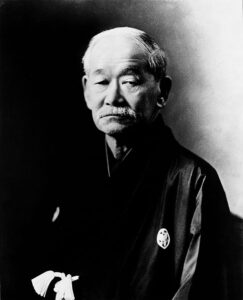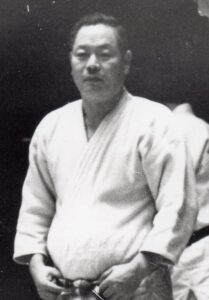
The history of martial arts belts, particularly the black belt and the introduction of colored belts, encompasses various stories and influences that have shaped the ranking system we know today. Let’s delve into the fascinating journey behind the development of this significant aspect of martial arts.
Myths and legends.
There are a couple of legends associated with the origins of the martial arts belt system that are often shared but are not rooted in historical accuracy. One such legend suggests that the belt system began with the white belt, which, over time, would become progressively darker and more experienced due to exposure to dirt and training outdoors. According to this story, the belt would transition from pure white to a darker brown color and eventually to black.
Another myth suggests that practitioners were strictly prohibited from washing their belts to preserve the “experience” it had gained. This legend still influences certain traditions, and many academies discourage washing belts, although primarily to prevent the loss of earned merit stripes or tips.
What actually happened?
Traditionally, belts were not used as a ranking system in the early 19th century. Instead, students were awarded a “menkyo,” a certificate that acknowledged their level of achievement. However, in the late 19th century, a pivotal figure emerged who would revolutionize the concept of belts in martial arts – Master Jigoro Kano, the founder of Judo.

Jigoro Kano was a schoolteacher who observed ranking systems in other Japanese competitions and games. Inspired by these practices, he sought to introduce a similar structure to his newly created martial art, Judo. Before Kano’s innovation, older Samurai martial arts employed a five-level ranking system called “menkyo” or “license.” However, this system lacked any outward display of rank.
Kano was particularly influenced by the game of “Go,” a Japanese strategy game that ranked its players for competition, as well as by advanced swimmers who wore a “black ribbon” around their waist to signify their skill level. Drawing inspiration from these sources, Kano decided to implement a rank structure in Judo.
In 1883, Kano established the initial belt colors for Judo, which consisted of only two options: white and black. The white belt was worn by students, symbolizing their beginner status, while the black belt was reserved for teachers and advanced practitioners, denoting their expertise. At that time, there were no additional black belt or “dan” grades.
The original black belts in Judo were not like the belts we recognize today. They were wide “Obi” belts, traditionally worn over the kimono to keep it closed.

The history of colored belts in martial arts took a significant leap forward in the 1930s and 1940s with the contributions of Mikinosuke Kawaishi, a Japanese master of Judo. In 1936, Kawaishi relocated from Japan to France to teach Judo and Jiu-Jitsu. During his time in France, he noticed that Western students were less patient when it came to the lengthy journey from white to black belt compared to their Japanese counterparts.
To cater to the Western students’ desire for more immediate recognition of their progress, Kawaishi introduced colored belts. This allowed students to visibly see and acknowledge their growth, skills, and knowledge as they advanced toward the coveted black belt. The tradition of colored belts quickly spread to other martial arts disciplines.
Today, the martial arts belt system continues to hold great significance. It represents a
